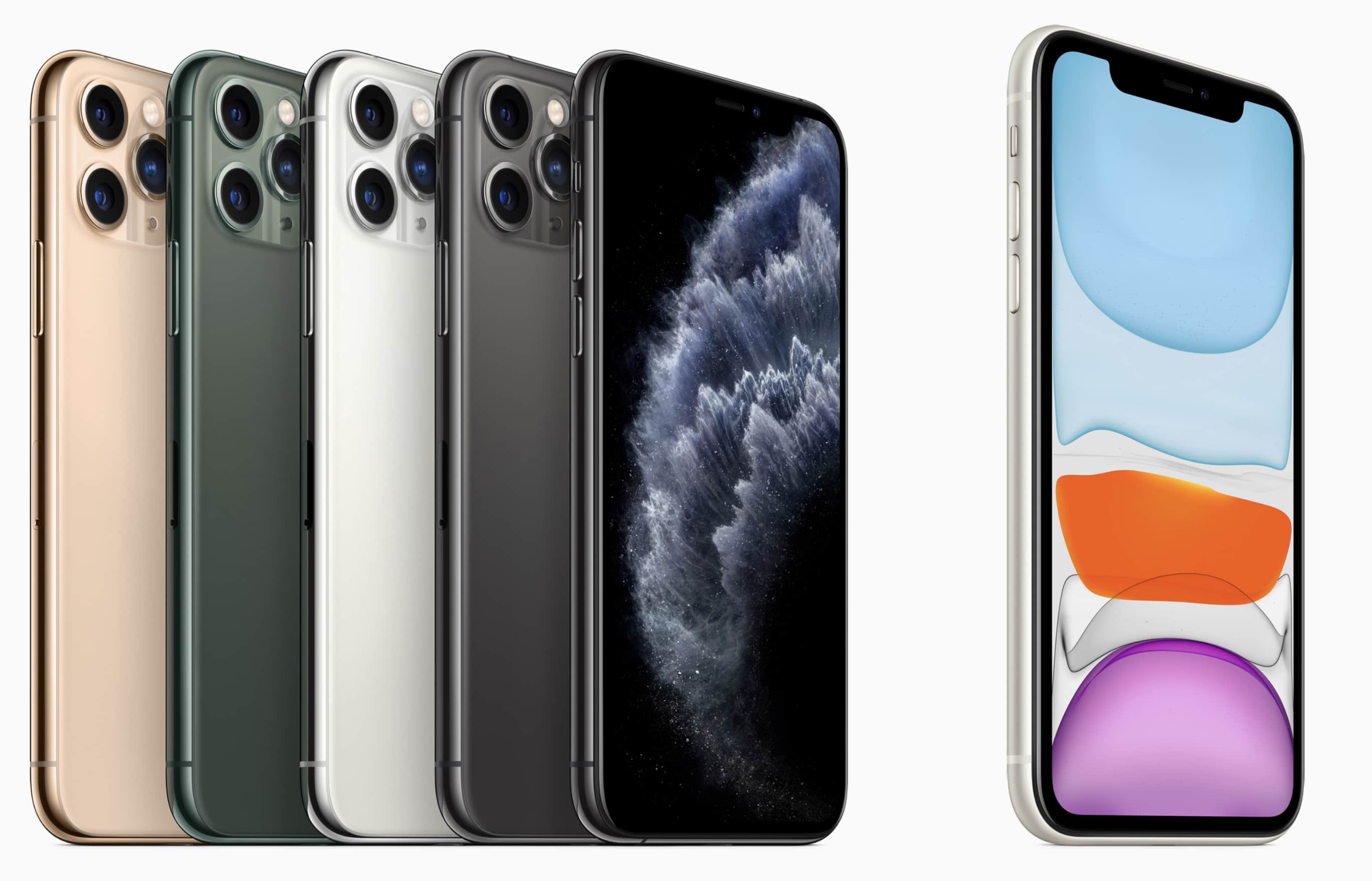Apple’s newest iPhone lineup features its first ever “Pro” smartphones, plus a more affordable entry-level model that’s a big upgrade over iPhone XR. iPhone 8 is also sticking around for now.
That’s four different handsets to choose from when you visit the Apple Store. So, which one is right for you? Our comprehensive comparison will help you decide.
There’s a lot to think about if you’re buying a new iPhone this fall. Are you shopping on a budget? Is the latest technology important to you? Do you want pretty colors or Apple’s best ever cameras?
Don’t spend your hard-earned cash on the wrong model. Find out all about the biggest differences between the iPhone versions on sale today and you’ll know exactly which one’s right for you.
iPhone 11 vs. 11 Pro vs. 11 Pro Max
Let’s start with the specifications. The newest handsets are very similar on the inside, but if you look closely, there are some significant differences between the three devices.
The iPhone 8 obviously offers older hardware — but that doesn’t make it a bad phone.
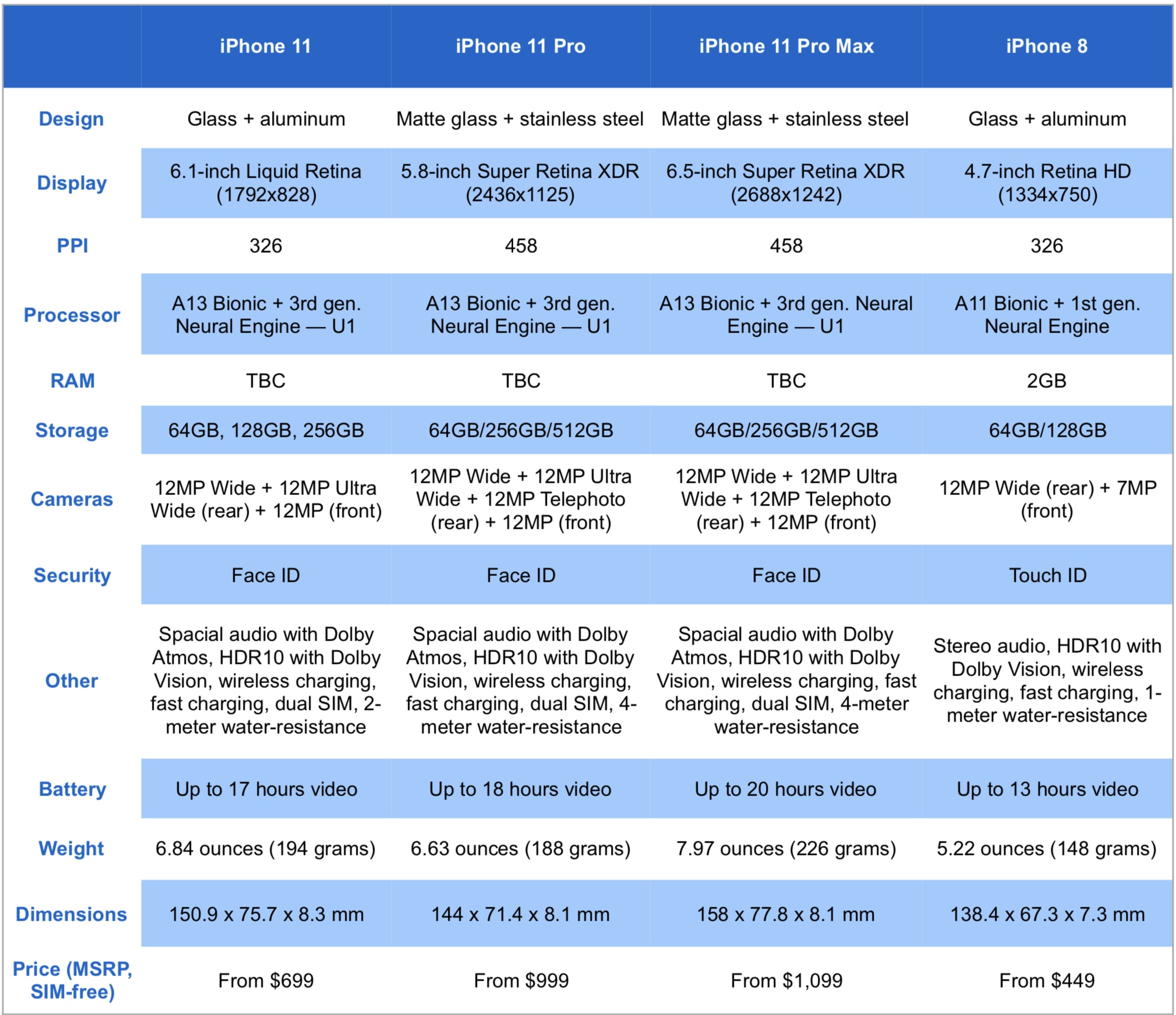
Table: Killian Bell/Cult of Mac
The best performance yet
The amazing new A13 Bionic chip makes the iPhone 11 lineup Apple’s most powerful yet. It’s up to 20% faster in processing and graphics than the A12 Bionic inside the iPhone XS and XS Max.
The A13 can process a staggering 1 trillion operations every single second, and features 8.5 trillion transistors. And yet, it’s substantially more efficient than previous Apple chips.
That’s thanks to a new 7-nanometer manufacturing process that packs all those transistors even closer together. It has a huge, positive impact on battery life (more on that later).
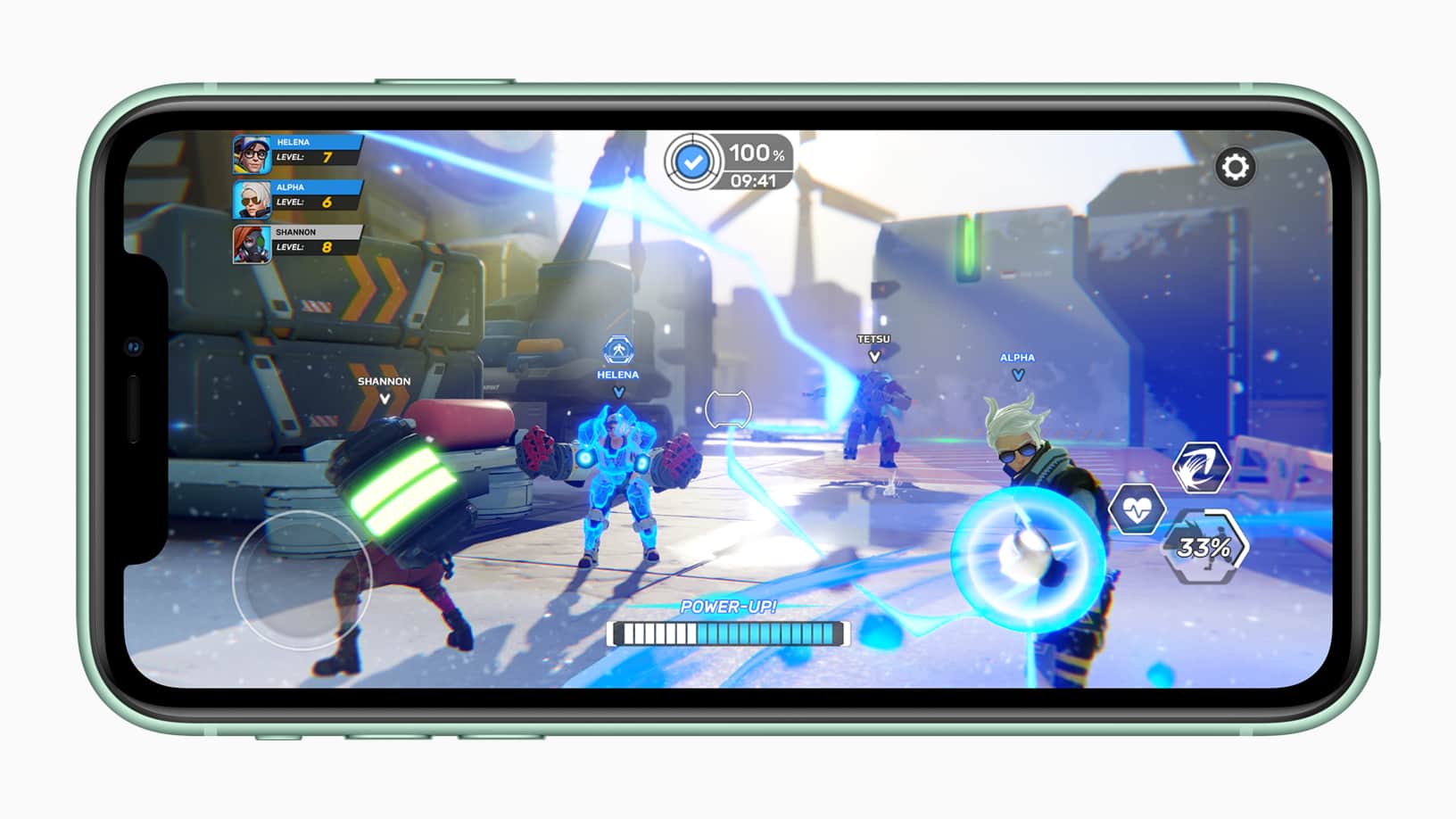
Photo: Apple
iPhone 8 is powered by the A11 Bionic chip first introduced in 2017. It’s not quite as speedy as the A13 (or even the A12), but for almost all smartphone users, it’s plenty fast enough.
iPhone 8 will run the latest apps and games just fine, while multitasking remains delightfully snappy. It will be supported by iOS 13 — and likely iOS 14 and beyond.
Stellar smartphone cameras
iPhone is the most popular camera in the world, and that’s because Apple has always delivered terrific camera performance. In recent years it has fallen behind a little, but iPhone 11 changes all that.
Additional sensors across the board give you a brand new Ultra Wide mode on iPhone 11, 11 Pro, and 11 Pro Max. It lets you fit four times more into a single frame, and makes for incredible panoramas.
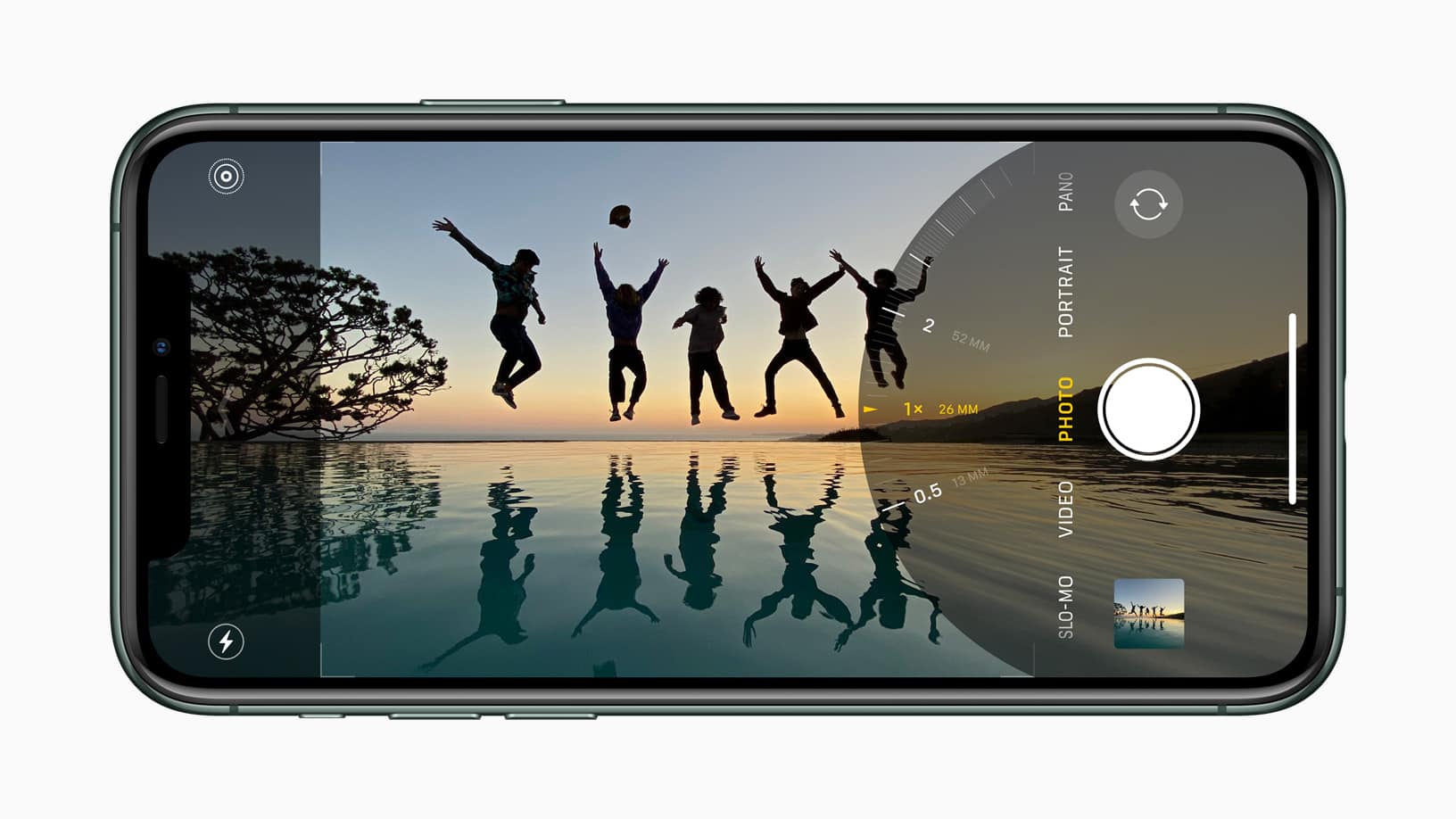
Photo: Apple
11 Pro and 11 Pro Max also offer 2x optical zoom, and it’s better than ever, thanks to an improved image signal processor. Smart HDR has seen a big upgrade this year, too, and we finally have a Night mode.
Night mode, just like that on Google Pixel handsets, dramatically improves low-light performance. It is activated automatically under the right conditions, and it basically lets your iPhone see in the dark.
Make way for Deep Fusion
Apple is also planning a new feature called Deep Fusion that will hit the latest iPhone lineup later this year. It promises to deliver the sharpest, most detailed photos you’ve ever shot on a smartphone.
iPhone 8 obviously pales in comparison in the photography department. Its single 12-megapixel snapper takes decent shots in most situations, and you’ll enjoy super-sharp 4K video recording.
But you’ll miss out on features like Portrait mode, optical zoom, and that new Ultra Wide functionality if you choose the cheapest iPhone.
Glorious glass designs
The larger camera module on Apple’s newest handsets has divided iPhone fans. Some people hate it, others … will at least try to ignore it. But it’s hard to deny the iPhone is a beautiful smartphone.
And it’s stronger than ever this year, with the toughest glass you’ll find in any smartphone, Apple says. The 11 Pro and 11 Pro Max also sport a matte finish that should make them a little less slippery.
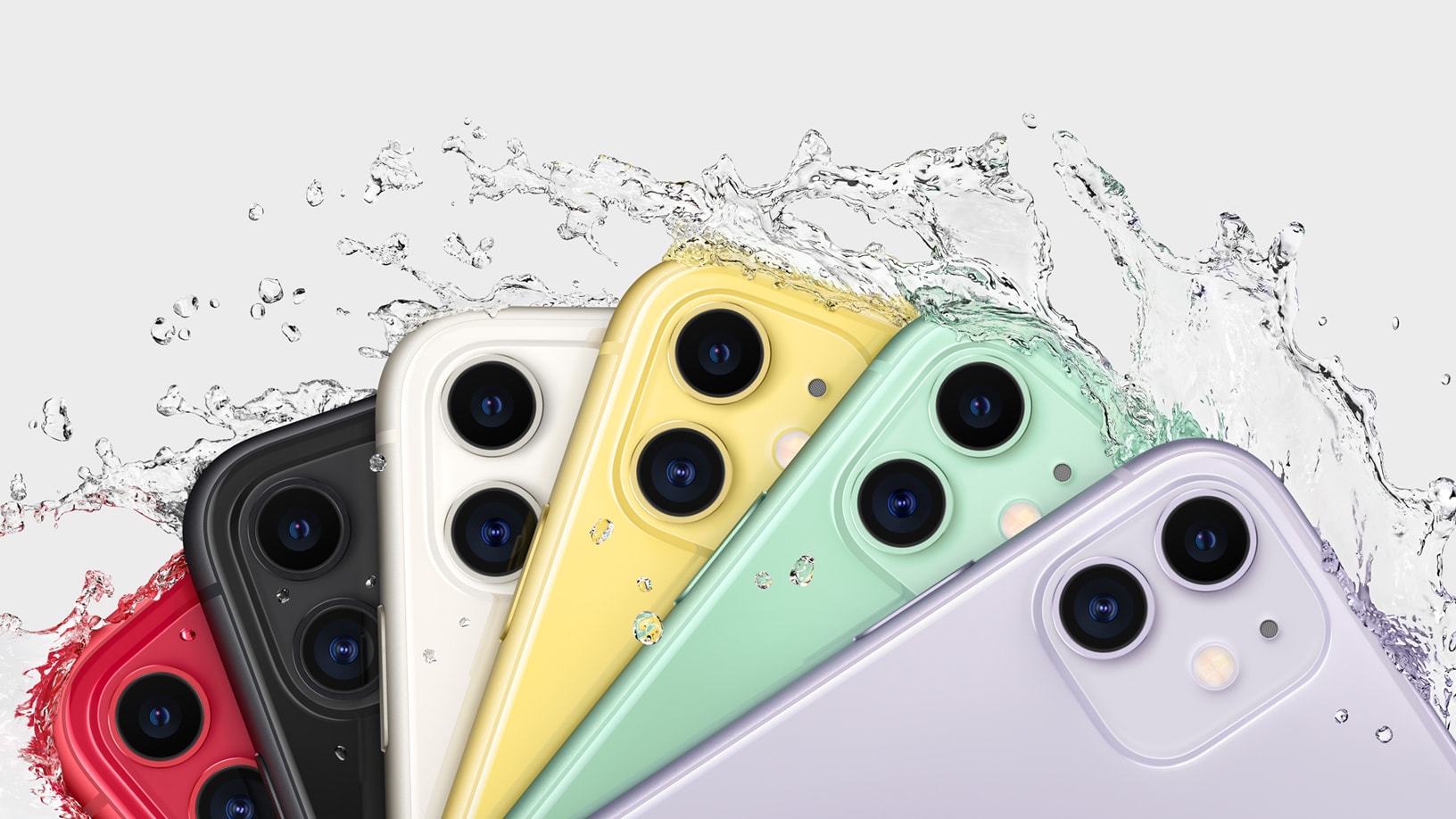
Photo: Apple
As usual, Apple’s more affordable devices — iPhone 8 and iPhone 11 — have aluminum frames. The pricier 11 Pro and 11 Pro Max use shiny, more robust stainless steel instead.
There’s another advantage to spending more, too. 11 Pro and 11 Pro Max are more water-resistant than their siblings, with the ability to withstand up to four meters of water for up to 30 minutes.
iPhone 11 can withstand two meters of water for the same period of time, while iPhone 8 can withstand only one meter.
Dazzling displays all round
Year after year, iPhone displays beat the competition in things like color accuracy. So no matter which model you choose, you’re all but guaranteed a superb screen.
iPhone 8’s Retina HD display is suitably sharp, with 326 pixels-per-inch, and it offers a respectable 1400:1 contrast ratio. It supports the P3 wide color gamut, and reaches up to 625 nits of brightness.
iPhone 11 offers much of the same. It has the same brightness and contrast ratio, and the same number of pixels packed into every inch. But it’s bigger, thanks to that stunning edge-to-edge design.
Of course, you get even better from the pricier models.
Exceptional XDR
11 Pro and 11 Pro Max feature a Super Retina XDR display — the first XDR display in a mobile device. In a nutshell, it means it packs the best technology Apple currently has on offer.
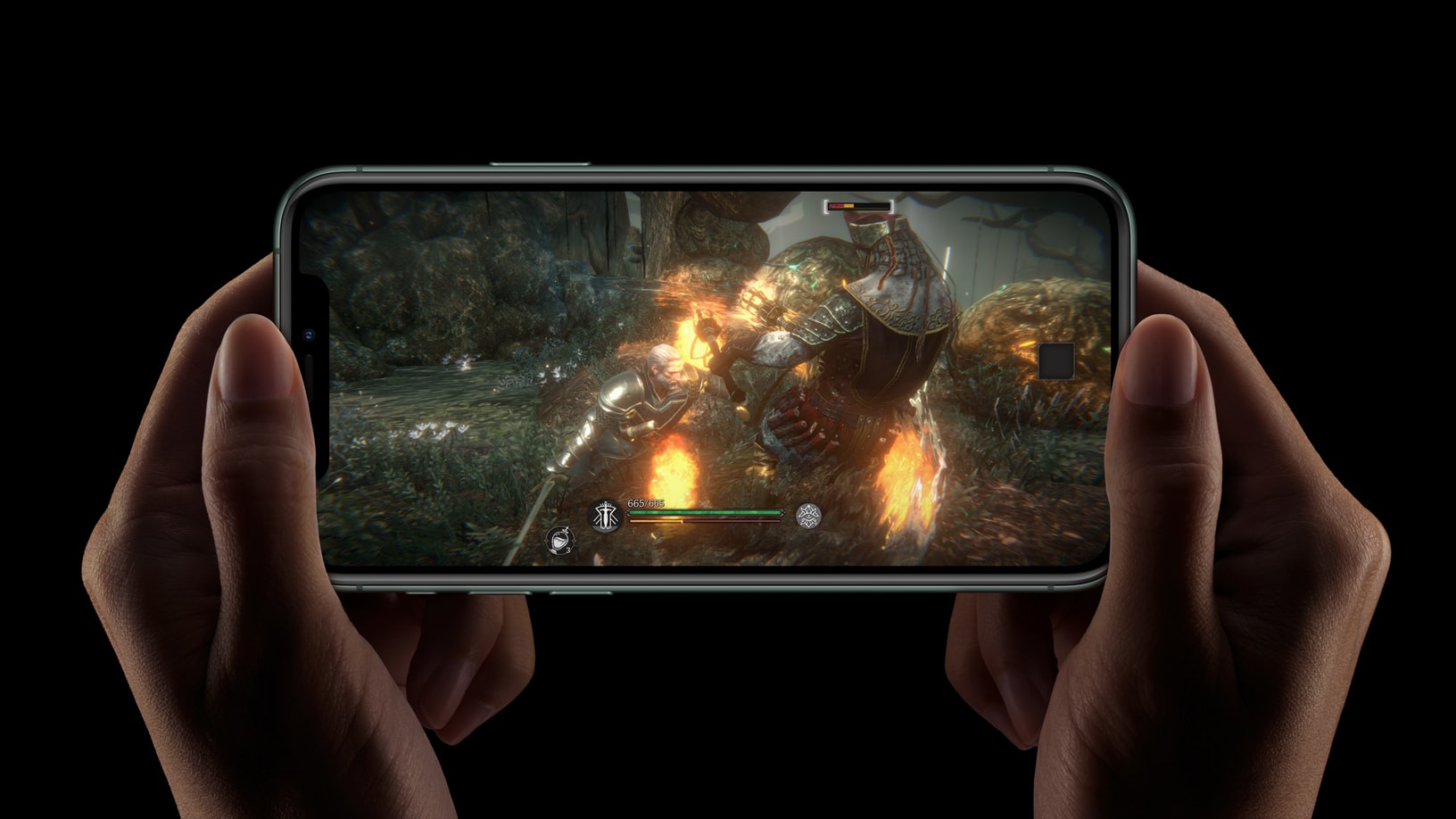
Photo: Apple
Both models feature an impressive 458 pixels-per-inch, and a glorious 2,000,000:1 contrast ratio. They also reach up to 800 nits of brightness and offer HDR support.
You also get OLED screens with 11 Pro and 11 Pro Max, whereas the iPhone 8 and iPhone 11 use LCD panels. OLED is considered to be far superior these days — and more efficient.
One advantage iPhone 8 has over the newer handsets is 3D Touch. Apple has now done away with this technology in favor of Haptic Touch, which does not require pressure-sensitive screens.
Haptic Touch works almost exactly the same, and offers identical functionality. It’s just less expensive to integrate into an iPhone.
The best biometrics
Rumor has it Apple is planning to build Touch ID into future iPhone screens, but we didn’t get that this year. So the newest iPhone lineup relies solely on Face ID.
Apple says it is substantially more secure than the Touch ID technology in iPhone 8. And because it doesn’t require a Home button, it doesn’t result in bulky bezels.
Some iPhone fans still prefer Touch ID, but once you’re used to its successor, you probably won’t miss it. Either way, you’re getting great biometric security that makes passcodes a thing of the past.
Everything else
You won’t be surprised to hear the latest iPhone lineup has other new technologies you won’t find in iPhone 8.
They include spatial audio with Dolby Atmos support, an ultra wideband chip, Animoji and Memoji, Audio Zoom, and more. You also get much better battery life.
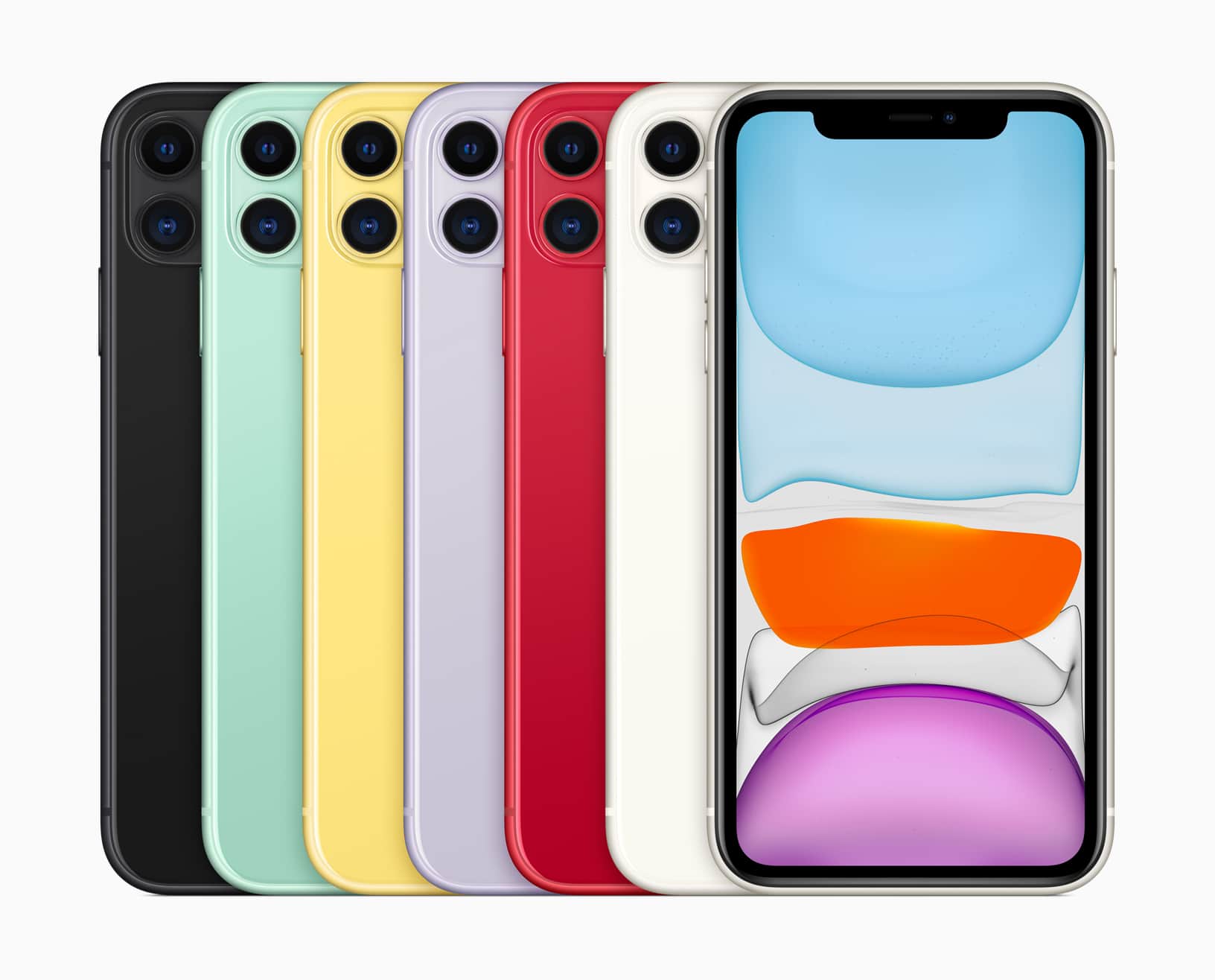
Photo: Apple
The 2019 iPhone lineup lasts longer than any other in between charges. iPhone 11 lasts up to one hour longer than iPhone XR, while 11 Pro lasts four hours longer than iPhone XS.
But there’s one thing that makes the iPhone 8 incredibly attractive.
At just $449, iPhone 8 is by far the most affordable handset available from Apple today. And although it’s not the latest iPhone, it still delivers a heck of a lot for the money.
Which iPhone is right for you?
With that said, iPhone 8 is the best iPhone for you if you’re on a tight budget. You will likely be very happy with it, and you certainly won’t be held back by its slightly older internals.
But what if money isn’t an issue? Then there are a few things you need to consider.
iPhone 11 looks a lot like 11 Pro and 11 Pro Max, with a similar edge-to-edge screen, the same A13 Bionic chip, and Face ID — and it’s more affordable. It also comes in a range of pretty colors.
But the iPhone 11’s LCD screen isn’t as advanced as the Super Retina HDR displays in the pricier models. And it misses out on the telephoto lens that makes optical zoom possible.
That could be a dealbreaker for many mobile photographers. If you want the best possible photos and videos, you need an 11 Pro or 11 Pro Max.
11 Pro is ideal for most iPhone fans. It’s the most compact model — even more compact than iPhone 11 — and it packs exactly the same technology as 11 Pro Max. You don’t miss out on anything.
The only reason to splash even more on 11 Pro Max is for its bigger screen. If you’re a fan of larger handsets, it’s well worth the extra cash.
Which one will you choose?
